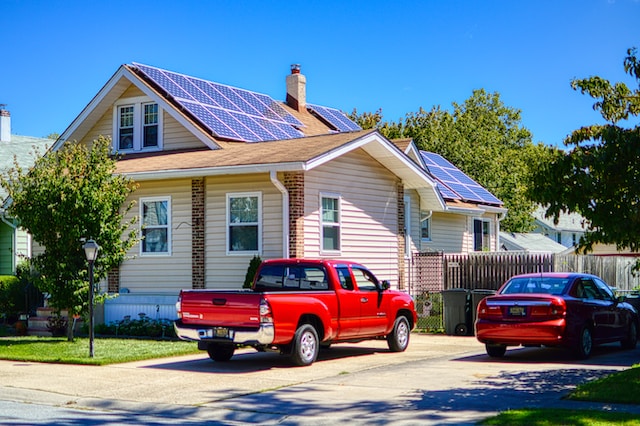Solar panel systems can save you money on your electricity bills for decades. However, calculating your solar panel savings isn’t as simple as it seems.
Several factors influence the length of your payback period, including how much you consume, your electric rate, and your energy production.
Determine Your Electricity Bill
So how much money do solar panels save? Solar panels are expensive upfront but will save you money on energy bills in the long run. Depending on the cost of electricity in your area, the average home can save between $20,000 and $97,000 over the lifespan of a solar panel system. Your electricity bill depends on how much energy you use per kilowatt-hour (kWh). You can determine your bill by looking at your meter readings and dividing the total kWh used since you last read it by your utility company’s kWh rate.
Once you know your electricity bill, you can estimate your solar panel savings using the following calculation. Start by determining how many kWh you use in an average month, which you can get from your meter readings or the kWh calculator on your energy supplier’s website.
Then, you can use the solar irradiance of your area to calculate how much solar energy your panels can produce in an hour. For an accurate figure, you can add this amount to your monthly kilowatt-hour use.
You can then use this number to estimate your total solar energy output over time. This will include your total kWh output and the kWh you’ve produced from solar energy in the past, and it should account for any degradation your solar system has experienced over time.
Determine Your Home’s Square Footage
The square footage of a home is one of the most important home valuation metrics. If you get the square footage right, it can save the value of your property.
To determine your home’s square footage, start by drawing a floor plan of your house and taking measurements outdoors. Then, add all the shapes to calculate your home’s total square footage.
You’ll also need to consider any spaces that aren’t included in the square footage of your home, like garages, pool houses, or unfinished basements. If you renovate rooms in your home to make them more livable, it could increase the square footage of your home.
Once you have your square footage, use our solar calculator to determine how much your solar panels will save you over time. This will give you an idea of how long it will take for your solar panels to pay for themselves, assuming you install enough to offset your electricity costs completely.
Determine Your Electricity Rate
The price for electricity is one of the biggest factors determining how much you can save with solar. It depends on your home’s energy use and how large a system you install.
Reviewing recent electric bills, you can find your average monthly electricity rate. This rate can serve as a baseline to estimate your solar panel savings.
Next, calculate how much power you use each month and year. This can be done by collecting a year’s utility bills or calculating the average daily electricity usage for the home (kilowatt hours per day, or KWH/day).
When figuring out how much electricity you use, consider seasonality and weather. This is especially important if you install a solar battery for additional energy storage.
Determine Your Roof’s Shape
Whether building a new home or replacing your current roof, choosing the correct roof shape for your unique building is important. It’s not only aesthetically pleasing, but it also keeps you and your family safe from the elements.
A roof can be made from various materials, including laminated glass, copper, asphalt, laminated rubber, aluminum sheeting, and more. It may also be constructed in different shapes, including flat, pitched, vaulted, or domed.
The most obvious part of a roof is its cover, which acts as a shield to prevent rain and snow from damaging the structure. It’s also a key element in preventing ice dams and water leaks.
Another major component of your roof is the ridge, which forms a horizontal line at the highest point where two sections intersect. It’s an important part of your roof’s structure and is often tiled to keep out the weather.
If you’re considering installing solar panels on your home, determine the appropriate roof shape. This can help you choose the right size system for your property and save you money over time.
Determine Your Home’s Energy Use
The first step to calculating your solar panel savings is determining how much energy you use in your home. This includes the energy used for heating, cooling, and lighting, as well as electricity used to power all your appliances.
The easiest way to do this is by using a usage calculator. Once you estimate how much energy your home uses in kilowatt-hours (kWh), you can calculate your total energy costs and the per kWh your utility company charges.
To get an accurate number, it’s a good idea to take the time to read your electric meter for a few weeks and record how much energy you use each day. By doing this, you’ll be able to accurately determine how much your energy costs will be each month with solar panels.
Once you have this information, you can calculate your potential solar savings using a calculator. This will help you determine how many solar panels your home requires to produce the electricity you need each year and how long it will take to install them to pay for themselves.




